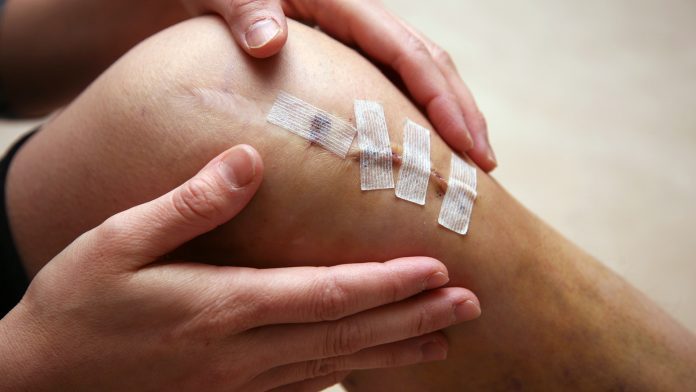
A new study finds that infusing morphine into shin bone could reduce pain after knee replacement surgery.
A recent study by Houston Methodist researchers found clinical evidence supporting the safety and efficacy of injecting pain medication directly into the tibia during knee replacement surgery to improve pain levels following the surgical procedure.
The researchers conducted a double-blind, randomised trial and revealed that patients receiving a mixture of morphine and the antibiotic vancomycin injected into the tibia (also known as the shin) of the knee joint appear to have less pain post-surgery compared to those receiving the infusion without morphine.
“Despite many technological advances, controlling pain after total knee arthroplasty can be challenging; most patients experience considerable pain and discomfort, especially in the first couple of weeks into their recovery,” said Kwan “Kevin” Park, MD, orthopaedic surgeon at Houston Methodist. “Intraosseous infusion, which involves injecting medication directly into the bone marrow, allows us to control pain pre-emptively so that patients don’t have to take as much pain medicine later on.”
Knee replacement surgery: tackling chronic pain
Total knee replacement surgery is recommended to alleviate chronic pain caused by damage to the knee joint from arthritis or injury. Data from the 2021 American Joint Replacement Registry Annual Report confirms that 54.5% of the nearly two million hip and knee procedures were primary knee replacement surgery between 2012 and 2020.
Knee replacement surgeries are conducted in high numbers and usually have favourable outcomes, the manipulation of soft tissue and resurfacing of damaged bones during knee replacement cause pain in the early postoperative periods.
“Twenty years ago, patients would remain in the hospital for several days after their surgery and receive extremely high-dose narcotics to help with their postoperative pain,” Park said. “But there has been a paradigm shift; patients are often discharged the same day after knee replacement surgery, and we use multimodal pain management techniques that work much better for pain control and require fewer narcotics.”
Reducing pain following surgery
Previously, the researchers found that injecting vancomycin directly into the tibia before surgery helped reduce infection by reaching a higher concentration of the drug in the knee. Impressed by this discovery, the researchers investigated whether adding morphine to the tibial bone with a standard antibiotic solution could improve post-surgery pain.
For the study, the team included 48 patients needing total knee replacement surgery. Of the patients, half were randomly assigned to receive the combination of vancomycin and morphine injected into the bone marrow. The remaining patients only received the antibiotic. The researchers monitored patient-reported pain, nausea and opioid use for up to 14 days after knee replacement surgery. Park’s team collaborated with Francesca Taraballi, PhD, assistant professor of orthopaedic surgery and director of Houston Methodist’s Centre for Musculoskeletal Regeneration, to measure the serum levels of morphine and an inflammatory marker called interleukin-6 in all study participants for 10 hours after the operation.
When the researchers analysed the data, they found that those given morphine into the tibia had lower pain scores after knee surgery compared to those who did not. These patients also reported having less pain for several days despite the fact they had similar interleukin-6 inflammatory marker levels as the control group. Taken together, although the patients who received pain medication-infused directly into the tibia during surgery had comparable inflammation, these patients were taking less pain medication following surgery.
Park noted that this infusion of opiates directly into the bone marrow during surgery could potentially even facilitate a swifter recovery of the knee joint.
“By infusing pain medication intraosseously, we’re able to reduce postoperative pain for up to two weeks, reduce the number of pain pills patients need and even possibly improve the function of the knee over time,” he said. “Our technique also can improve the multimodal pain management protocol we have been using for knee replacement over the years.”










